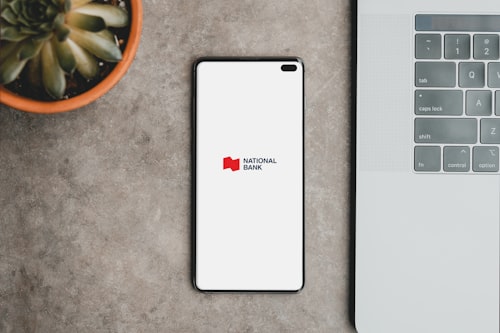Welcome to our comprehensive guide on email check for mobile deposit. In this article, we will explore the benefits of depositing checks through email, the potential risks involved, and best practices to ensure a secure and hassle-free experience. As an expert in financial technology, we will provide you with valuable insights and practical advice to help you make informed decisions when it comes to mobile check deposits.
The Convenience of Email Check Deposits
Mobile deposit technology has revolutionized the way we handle financial transactions. By allowing users to deposit checks electronically using their smartphones or other mobile devices, it eliminates the need for physical trips to the bank and offers a convenient way to manage personal and business finances.
Email check deposits take this convenience a step further by enabling individuals and businesses to receive checks directly in their email inbox. Instead of waiting for a physical check to arrive by mail, you can simply open the email, access the check image, and initiate the deposit process through a mobile banking app or an online banking portal.
Meta Title: Email Check for Mobile Deposit: Ensuring Security and Convenience
Meta Description: Discover the benefits of email check deposits and learn how to ensure a secure and hassle-free experience. Understand the potential risks involved and follow best practices for mobile check deposits to safeguard your financial transactions.
The Potential Risks of Email Check Deposits
While email check deposits offer convenience, it is essential to be aware of the potential risks associated with this method. Here are some of the key considerations:
1. Email Security
Emails containing check images can be vulnerable to interception or unauthorized access if proper security measures are not in place. It is crucial to ensure that both the sender and recipient of the email use secure email protocols, such as encrypted connections and strong passwords, to protect sensitive financial information.
2. Check Fraud
Check fraud is a significant concern when it comes to email check deposits. Fraudsters may attempt to create counterfeit checks, manipulate check images, or use stolen check information to deceive individuals or businesses. It is vital to be vigilant and employ robust security measures to detect and prevent check fraud.
3. Account Verification
Before depositing an emailed check, it is important to verify the authenticity of the check and the sender. Confirm the legitimacy of the issuing bank and cross-reference the check details with the sender's contact information to ensure that the check is genuine.
Best Practices for Email Check Deposits
To ensure a secure and successful email check deposit experience, follow these best practices:
1. Use Trusted Banking Apps or Portals
When depositing checks through email, use trusted and secure mobile banking apps or online banking portals provided by reputable financial institutions. These platforms are designed with robust security measures to protect your financial transactions.
2. Verify Sender and Check Authenticity
Before initiating a deposit, verify the identity of the sender and the authenticity of the check. Contact the sender through a verified phone number or email address to confirm the check details and ensure that it is a legitimate transaction.
3. Protect Email Communications
Ensure that your email communications are secure by using encrypted connections and strong passwords. Regularly update your email software and enable two-factor authentication for an added layer of security.
4. Be Cautious of Unsolicited Checks
If you receive an unsolicited check via email, exercise caution. Scrutinize the email, check image, and sender details for any signs of fraud. When in doubt, contact your bank or financial institution to seek guidance before depositing the check.
5. Monitor Your Accounts
Regularly monitor your bank accounts and transaction history to detect any suspicious activities. Report any unauthorized transactions or suspected fraud to your bank immediately.
Frequently Asked Questions (FAQs)
Q1: Are emailed checks as secure as physical checks?
Emailed checks can be secure if proper security measures are in place. It is crucial to use secure email protocols, protect your email account, and verify the authenticity of the check and the sender before depositing the check.
Q2: Can I deposit an emailed check into any bank account?
You can deposit an emailed check into your bank account, provided that your bank supports mobile check deposits and accepts emailed checks. Check with your bank to confirm their policies and procedures regarding email check deposits.
Q3: What should I do if I suspect check fraud?
If you suspect check fraud, immediately contact your bank or financial institution and provide them with all relevant details. They will guide you through the necessary steps to protect your account and investigate the potential fraud.
Q4: Can I deposit an emailed check multiple times?
No, you should never attempt to deposit an emailed check multiple times. Once a check has been successfully deposited, it should be voided or securely destroyed to prevent any accidental or intentional re-deposit.
Q5: What happens if an emailed check gets lost or deleted?
If an emailed check gets lost or deleted, contact the sender and request a replacement check. Ensure that you securely store or archive important financial emails to prevent accidental loss or deletion.
By following these best practices and staying vigilant, you can enjoy the convenience of email check deposits while safeguarding your financial transactions. Remember to prioritize security and take necessary precautions to protect yourself from potential risks.



